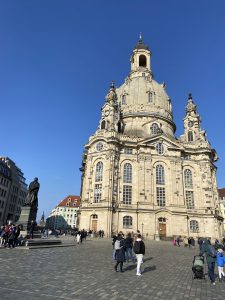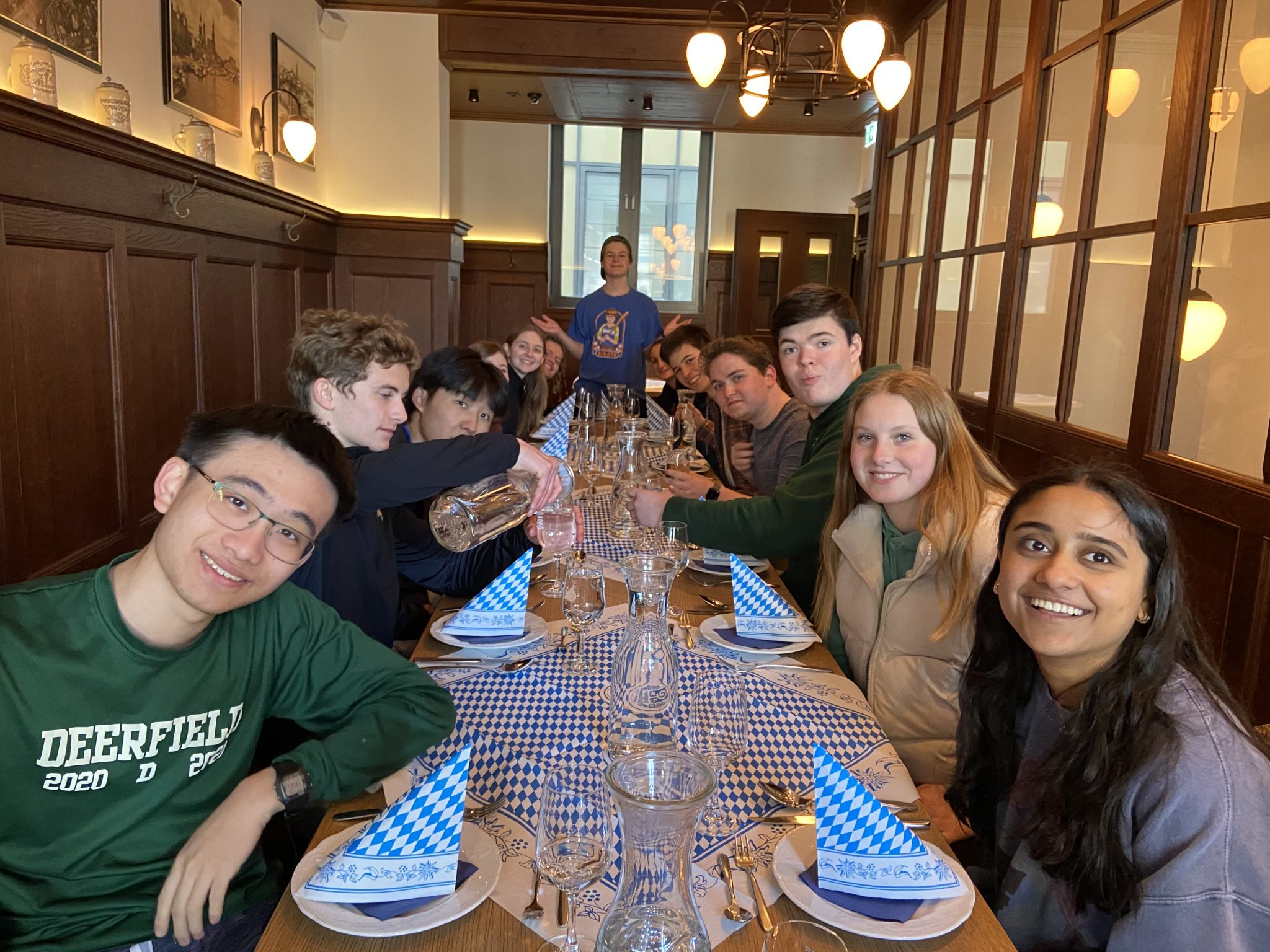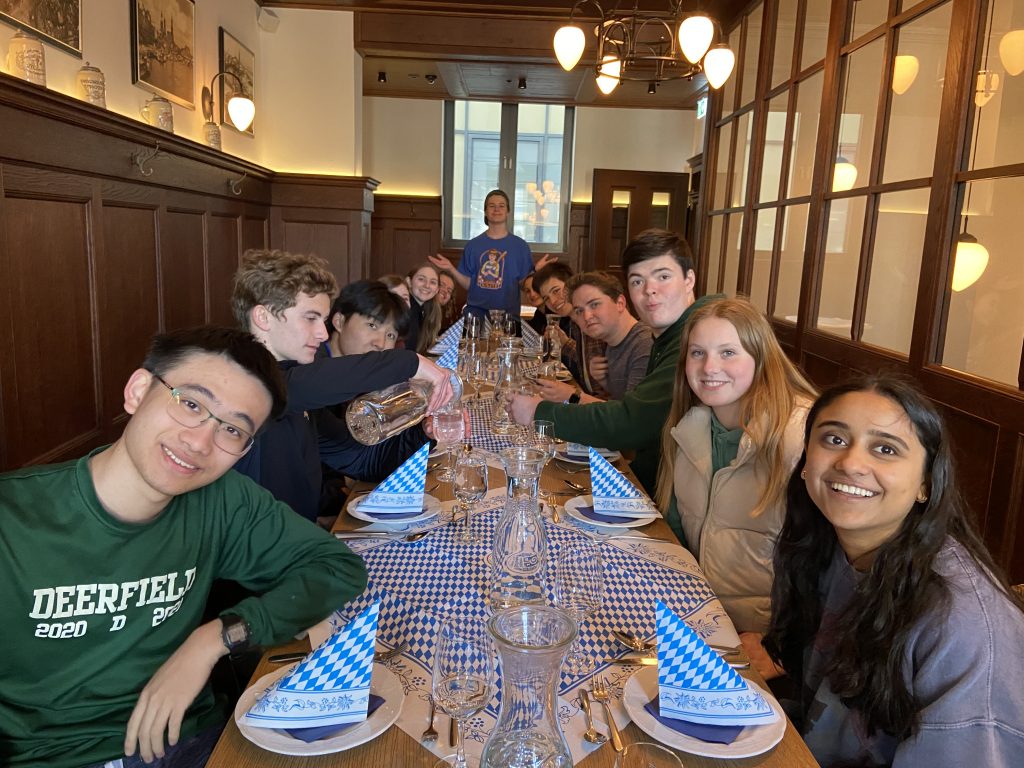Ben ’24 and Lauren S. ’24, reflect on the groups visit to Terezìn, Lottie ’25, describes the various historical sites visited during a walking tour of Prague, and Lauren L. ’24, shares a fun architectural fact.
“ARBEIT MACHT FREI” These were the words we first encountered when we entered Terezìn; the holding camp for children during the Holocaust. The irony of this phrase, which translates roughly to “work sets you free” lies in the fact that the Nazis coopted it from the Habsburgs, who had previously used the camp to detain disloyal Germans. Years later, Hitler’s forces used the fortress in a similar manner to hold Jews who were waiting to be “relocated in the East.” Many of the families and children held in the camp, though, did not know that the “relocation” would actually result in extermination. The children that attended this camp either perished of disease here or were murdered in Auschwitz.
At the beginning of our trip, Mr. Leistler referred to the phrase “you have to go there to know there,” and as we stepped through the stone gates of the small fortress, the phrase began to make more sense. Suddenly, all of the theoretical elements of the stories we had studied that had previously felt so removed now felt more real than ever. We experienced, perhaps not firsthand, but nonetheless up close, the crowdedness of the barracks, the small spaces that held hundreds and thousands of people, the lack of light, and the dull scenery, as well as the rows of fake sinks created to appease the international Red Cross on their inspections. Walking around the camp and museum, our most meaningful reflections yet centered on what we would have missed had we not visited Terezin today. The Holocaust, as Mr. Leistler framed it to us, is an incredibly complex puzzle, with many layers to peel back, and our direct observation of a place that just 80 years ago held such horrific circumstances allowed us to dig to the core questions that guided our entire trip through central Europe.
-Ben ’24 and Lauren S. ’24
After a quick drive through the streets of Prague, we started our day with a walk through the courtyards of a castle. Although the buildings are now filled with politicians offices and the courtyards full of tourists, it’s not hard to imagine a royal parade, or Maria Teresa looking out over her court. Within the castle is a church with two tall, gothic towers, each about 82 meters tall (wow). Our tour guide led us through, talking about the yellow façade of the castle and the multiple phases of building the church. We exited the castle, waving to the stoic Czech guards, dressed a bit like nutcracker dolls. On our walking tour, we stumbled upon the smallest hotel in Prague (an adorable blue medieval-style building) and the birthplace of famous Czech author, Neruda. We also saw the Lennon wall, which is more of a tourist attraction than anything, but some of the artwork that peeks out on the top is stunning. We eventually made it to the famous Charles bridge, where our tour guide mentioned one of the Mission Impossible movies was filmed.
This bridge is 500 feet long and houses a famous bronze statue of Saint John of Nepomuk. After exiting the bridge, we followed down the longest winding street of Prague until we reached the famous astronomical clock. The clock is a marvel of math and engineering for its time (1410!) and is the oldest working clock in the entire world. The patterns and colors pop out against the old town hall on which it is situated, but the real show was at noon. Multiple of the figures move and turn at the hour, and it’s hard to believe that there are no electronics involved. We stood in the crowded square while watching the clock chime, many people held their phones out, but I was focused on the marvel with my eyes (you can look up a video online if you want to see). Anyways, that’s my recap of our morning in Prague!
-Lottie ’25
Today, we explored Prague, the capital city of the Czech Republic. We learned a range of Prague history, such as the legend of Princess Libuše which claims that she prophesied and founded Prague in the 8th century. We also acquired new architectural knowledge. For example, the architecture on churches strongly favors the gothic style of pointed arches as opposed to Roman style’s rounded arches. New buildings refrain from conforming to modern elements. Not once will you spot the familiar green Starbucks logo because it takes away from the street’s historic traditionalism.
Later, we set off to find lunch. We couldn’t help but be drawn to the smoky smell of Czech sausage, encased in a white bun topped with red cabbage, white cabbage, cucumber, and caramelized onions. For a sweet treat, we enjoyed chimney funnel cakes, a delicious delight made of soft dough sprinkled in sugar, baked into a cone shape, usually topped with ice cream. Interestingly, Czechs have taken claim to this dessert although it derived from Transylvania, Romania. Nevertheless, it has grown popular around Central Europe.
-Lauren L. ’24


